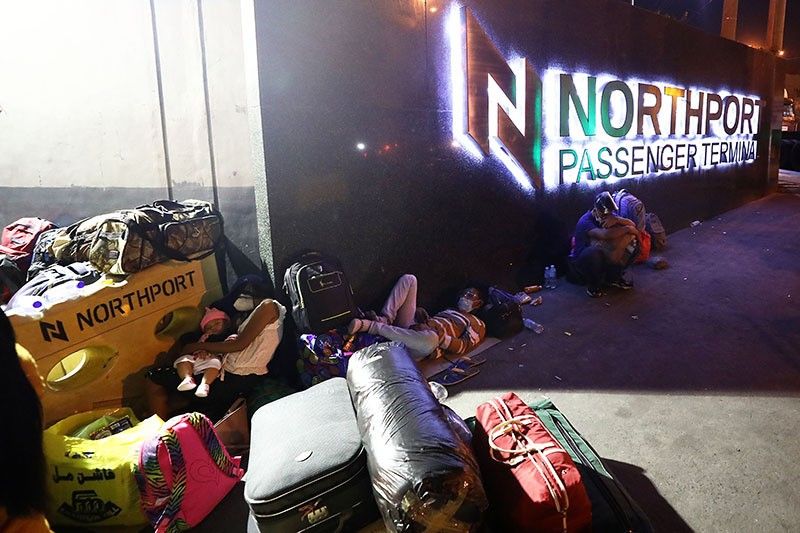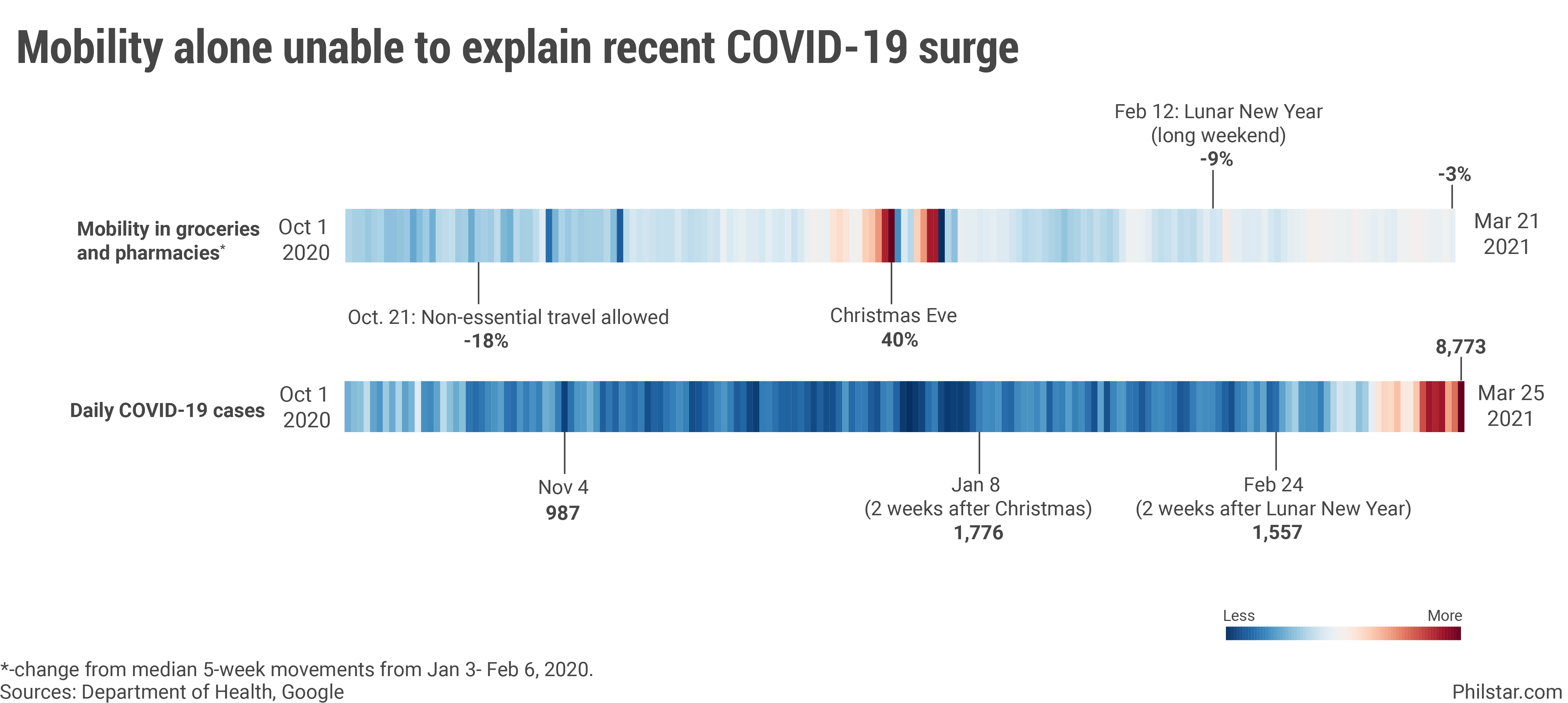Greater mobility insufficient explanation for latest virus spike

MANILA, Philippines — People's movements after curbs that were eased alone are unable to explain the sudden spread of coronavirus, bolstering some government offcials' assessment that more infectious variants are primarily to blame for the surge.
An analysis of Google Mobility data and government’s daily COVID-19 case tally showed no direct correlation between changes in the scale of people’s mobility and the magnitude of infections since the economy further reopened in October.
Philstar.com’s findings back the defense of economic managers that when economic activities restarted as early as June, cases did not shoot up and therefore are unlikely to be the lone culprit for the latest contagion in Metro Manila. In October, the reopening took one step further by allowing non-essential flights to take off.
This observation appears to hold even accounting for changes in the number of testing each day. For instance, while daily infections dropped in early October after the Philippine National Red Cross halted testing, a speeding up on the same over the next weeks did not result into an abrupt increase in infections.
Sought for comment, Jose Ramon Albert, a senior research fellow at Philippine Institute for Development Studies, a taxpayer-funded think tank, said COVID-19’s variants that entered Philippines starting January are causing the surge. The health department itself admitted that the variants from the UK, South Africa and that a novel one first detected at home are already widespread in the Metro.

“What might be inferred is that the variants are kicking in, plus people’s behavior may be getting lax in following protocols, and that's not surprising since government never punished any government leaders who defied protocols,” he said in an email exchange.
The implications of this are vast especially in setting policies. Jurisdictions had been quick to resort to lockdowns early in the pandemic to arrest the spread, but with economic damage now also trying to be contained, the socioeconomic planning agency warned a return to broad prohibitions will have catastrophic consequences such as exacerbating joblessness and hunger.
Yet whether or not it was correct for the government to reopen and avert bigger economic repercussions may still be up for debate, especially when the type of reopening is considered. For instance, calls back in January to immediately impose a ban on travelers from the UK and other nations to prevent the variant from getting in were only heard belatedly, and when the prohibition was enforced, it was only for a month.
As it is, movements are still very limited
With more contagious variants already in, Leonardo Lanzona, a labor economist at Ateneo de Manila University, said “even small movements of people mobility” have resulted into infections now seen to spread in households. That is even if strictly speaking, Filipinos are yet to move as freely as they were before.
Google Mobility data, culled from location pings from smartphones, showed that trips to groceries and pharmacies were still down 3% in March 21 from a 5-week baseline ending first week of February last year. In the same breadth, trips to restaurants and shopping centers were still down 39%. This same data is used by the central bank to gauge economic activity, which in turn is considered in crafting policies.
Limited movements are a result of still insufficient public transport and Jedd Ugay, a transport economist over at AltMobility PH, a commuter advocacy group, believes this needs to be augmented if also to assist in curbing cases.
“If public transport is insufficient, there will always be crowding of people waiting for PUVs (public utility vehicles) to arrive, long queues, long waiting times--and all of these contribute to crowding, longer exposure risk, and ultimately higher risk of COVID transmission,” he said over email.
- Latest
- Trending


























